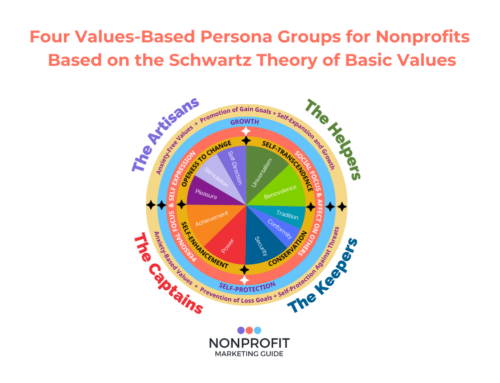This question came up recently in the Communications Director Mentoring Program: “I’ve been asked to start attracting new groups of people as volunteers and donors who are different than our current volunteers and donors. How do I do that without losing the ones we have?”
This question comes up A LOT, especially in the context of an aging donor base.
Nonprofit leaders who are not schooled in marketing and communications often assume that it is simply an awareness problem. If those groups of (fill in the demographic blank — e.g. younger) people knew about us, they would love us, they say.
Unfortunately, that’s usually wishful thinking.
If everything you are doing now was, in fact, attractive to those demographics, they would be in your midst already, instead of appearing on the list of the “new” people you are trying to reach.
So, that means changes or new approaches will be necessary.
Here are three questions to help you figure out what to do next . . .
1. Is this issue/program really relevant to that group?
As much as you may wish that the work you do is important and interesting to EVERYONE, it’s just not true.
You have to be brutally honest about the “So What and Who Cares?” questions. And why should they care? And why now?
If you don’t have solid footing on these relevancy questions, there isn’t much you can do short of redesigning your programming.
2. How can we change the message and its presentation to be more attractive to this group?
Let’s say you passed the basic relevancy test and you really do believe your issues or programs will be of interest to this new demographic.
Your next challenge is to figure out how to talk about your issue or program in ways that resonate with this new group you are trying to attract.
Think about the benefits and the barriers.
First, the benefits. What’s really in it for them? Let’s say you have a list of five benefits of your program. Maybe number 1 and 2 have attracted your current donors, but number 5 is really a top priority for this new group.
How do you know? Talk to them and learn about them!
Also, consider the barriers. The new group may have concerns that are huge in their minds, but that you have minimized or aren’t even aware of. For example, certain groups may have trust or safety concerns in working with organizations like yours that you may think are unfounded. That may be true, but perception is reality in situations like this.
Again, get to know people who are in this new demographic. Listen to them. Ask for their advice and follow it.
3. Are we the best messengers, and if not, who would be?
If your issues or program are relevant and your message is on target, your next question is about how that message is delivered and by whom.
Messengers come in many forms, and some of them aren’t even human! Take the photography on your website for example. That sends a message. If you are trying to attract young, diverse families but all of the people on your website are much older and whiter, that sends a message about who you serve. The same is true with your staff and board diversity. Do people see others who look like them when they look at your organization and its materials?
You may need to think about “gatekeepers” too, or trusted individuals who effectively have the ability to approve or disapprove your communications within their communities. Sometimes these people are in formal roles (e.g. a pastor is gatekeeper for a congregation) or informal roles (the trendsetter in a group of parents).
Once again, the best way to find out is to get to know people in this new group, to ask questions, and to listen.






